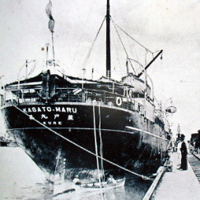
JAPAN 460:
Advanced Reading Comprehension and Translation
Japanese-language Literature of Brazil
1932-37
Mondays, Wednesdays, and Fridays, 9:00-10:20am
Denny 311
Professor Ted Mack
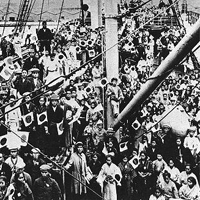
 |
JAPAN 460: Japanese-language Literature of Brazil Mondays, Wednesdays, and Fridays, 9:00-10:20am |
 |
This term we will be reading through four works, all of which were awarded first or second place in the four Shokumin kenshô tanpen shôsetsu (植民文芸懸賞短編小説) competitions held by the Burajiru jihô newspaper (São Paulo, Brazil) between 1932-37. The works are: Sonobe Takeo (薗田武夫)'s "Tobaku-nô jidai (賭博農時代)" (first place, 1932); Katayama Yôko (片山耀子)'s "Natsuyo (夏代)" (first place, 1934); Takemoto Yoshio (武本由夫)'s "Uzu (渦)" (second place, 1935); and Kawakami Hisa (川上ひさ)'s "Tomoshibi (灯)" (second place, 1937). The first three stories have been reproduced in the anthology, Koronia shôsetsu senshû, vol. 1 (São Paulo: Koronia Bungakukai, 1975). All four texts will be made available to students as electronic reserves. |
|
The following resources are recommended.
Additional commentary, including a list of applicable koronia-go (loan words from the Portuguese), will be available on the course blog, Reading Japanese. |
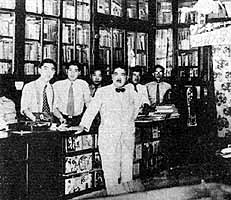 |
The reading schedule below is tentative, and will adjust based on the progress of the class. Class dates marked with an asterisk (*) will be taught by a guest instructor. |
|
Tentative Reading Schedule |
|
| 3/31 (Monday) | Introduction |
| 4/2 (Wednesday) | Katayama Yôko, "Natsuyo," 28-29. |
| 4/4 (Friday) | "Natsuyo," 29-30. |
| 4/7 (Monday) | QUIZ #1; "Natsuyo," 31-32. |
| 4/9 (Wednesday) | "Natsuyo," 32-33. |
| 4/11 (Friday) | "Natsuyo," 34. |
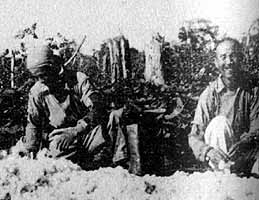 |
|
| 4/14 (Monday) | QUIZ #2; Takemoto Yoshio, "Uzu," 72-73. |
| 4/16 (Wednesday) | "Uzu," 73-74. |
| 4/18 (Friday) | "Uzu," 75-76. |
| 4/21 (Monday) | QUIZ #2; "Uzu," 76-77. |
| 4/23 (Wednesday) | "Uzu," 78-79. |
| 4/25 (Friday) | "Uzu," 79-80. |
| 4/28 (Monday) | QUIZ #3; "Uzu," 80-81. |
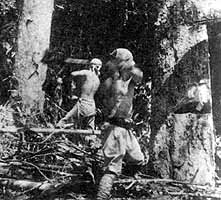 |
|
| 4/30 (Wednesday) | Sonobe Takeo, "Tobaku-nô jidai," 6. |
| 5/2 (Friday) | "Tobaku-nô jidai," 7. |
| 5/5 (Monday) | QUIZ #4; "Tobaku-nô jidai," 8. |
| 5/7 (Wednesday) | "Tobaku-nô jidai," 9. |
| 5/9 (Friday) | "Tobaku-nô jidai," 10. |
| 5/12 (Monday) | QUIZ #5; "Tobaku-nô jidai," 11. |
| 5/14 (Wednesday) | "Tobaku-nô jidai," 12. |
| 5/16 (Friday) | "Tobaku-nô jidai," 13. |
| 5/19 (Monday) | "Tobaku-nô jidai," 14. |
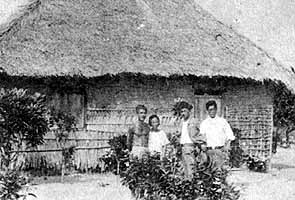 |
|
| 5/21 (Wednesday) | QUIZ #6; Kawakami Hisa, "Tomoshibi," part 1. |
| 5/23 (Friday) | "Tomoshibi," part 2. |
| 5/26 (Monday) | HOLIDAY -- Memorial Day |
| 5/28 (Wednesday) | QUIZ #7; "Tomoshibi," part 3. |
| 5/30 (Friday) | "Tomoshibi," part 4. |
| 6/2 (Monday) | QUIZ #8; "Tomoshibi," part 5. |
| 6/4 (Wednesday) | "Tomoshibi," part 6. |
| 6/6 (Friday) | REVIEW |
| 6/11 (Wednesday) | FINAL EXAM: Wednesday, 11 June 2008, 8:30-10:20 am |
About the Course: This course focuses solely on developing advanced Japanese reading skills through practice. Students read through Japanese fiction on their own and then meet to go over that reading, focusing on grammar and vocabulary but also discussing literary devices and effects. Unlike most other language offerings, this course is made up of readings that have not been tailored or selected for ease of comprehension. Students read celebrated stories of recent years, regardless of difficulty, in their complete form. The goal of the course is to introduce students to the real complexity and beauty of literary Japanese, while providing them with the tools necessary to read even the most challenging fiction. The hope is that the course will begin students on a lifelong path of reading Japanese literature – whether professionally or recreationally. A grade of 2.5 or higher in JAPAN 313 or its equivalent is an absolute requirement. A high level of Japanese reading ability is required; expect the gulf between third-year Japanese readings and these stories to be substantial. The syllabus below will be in flux throughout the semester as we move through the stories. Watch the online syllabus and talk with your classmates about where we are for any given class meeting. Required Materials:
Grading:
|
All texts are available online. |
|
| All necessary texts are available through the University of Washington E-reserves. |  |
| Many of the texts for this class require Adobe Acrobat Reader. |
Page last updated on February 27, 2009